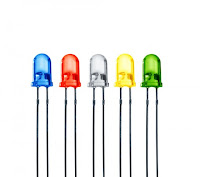Arduino makes it as easy as possible to program tiny
computers called microcontrollers, which are what makes objects interactive. You
are surrounded by dozens of them every day: they are embedded in timers, thermostats,
toys, remote controls, microwave ovens. They just do one specific task, and if
you hardly notice them – which is often the case – it’s because they are doing
it well. They have been programmed to sense and control activity using sensors
and actuators.
Sensors listen to the physical world. They
convert energy that you give off when you press buttons, or wave your arms, or
shout, into electrical signals. Buttons and knobs are sensors that you touch
with your fingers, but there are many other kinds of sensors.
Actuators take action in the physical
world. They convert electrical energy back into physical energy, like light and
heat and movement.
Microcontrollers listen to sensors and talk to
actuators. They decide what to do based on a program that you write.
Now, we have our Arduino starter’s kit; let us go over some
components we might find in the kit and what they do;
Arduino Uno - The microcontroller
development board that will be at the heart of your projects. It’s a simple computer,
but one that has no way for you to interact with it yet. You will be building
the circuits and interfaces for interaction, and telling the microcontroller
how to interface with other components.
Breadboard - A board on which you
can build electronic circuits. It’s like a patch panel, with rows of holes that
allow you to connect wires and components together. Versions that require soldering
are available, as well as the solder- less type used here.
Capacitors - These components
store and release electrical energy in a circuit. When the circuit’s voltage
is higher than what is stored in the capacitor, it allows current to flow in,
giving the capacitor a charge. When the circuit’s voltage is lower, the
stored charge is released. Often placed across power and ground close to a
sensor or motor to help smooth fluctuations in voltage.
Resistors - Resist the flow of
electrical energy in a circuit, changing the voltage and current as a result.
Resistor values are measured in ohms (represented by the Greek omega
character: Ω). The colored stripes on the sides of resistors indicate their
value (you can view resistor color Code table online).
.
|
Photoresistor - (also called a
photocell, or light dependent resistor). A variable resistor that changes its
resistance based on the amount of light that falls on its face.
Light Emitting
Diodes (LEDs) - A type of diode that illuminates when electricity passes through it.
Like all diodes, electricity only flows in one direction through these
components. You’re probably familiar with these as indicators on a variety of
electronic devices. The anode, which typically connects to power, is usually
the longer leg, and the cathode is the shorter leg.
Diode - Ensures electricity
only flows in one direction.Useful when you have a
motor or other high current/voltage load in your circuit. Diodes are polarized,
meaning that the direction that they’re placed in a circuit matters. Placed one
way, they allow current to pass through. Placed the other way, they block it.
The anode side generally connects to the point of higher energy in your
circuit. The cathode typically connects to the point of lower energy, or to ground.
The cathode is usually marked with a band on one side of the component’s body.
|
These
are just a few of the components expected to be in a starter's kit. We will go
over the rest of the components in another post. Ciao!








No comments:
Post a Comment